Official apathy: Cardio institute plan hits snags
Health minister said to be stumbling block in way of proposed project at Civil Hospital, Hyderabad
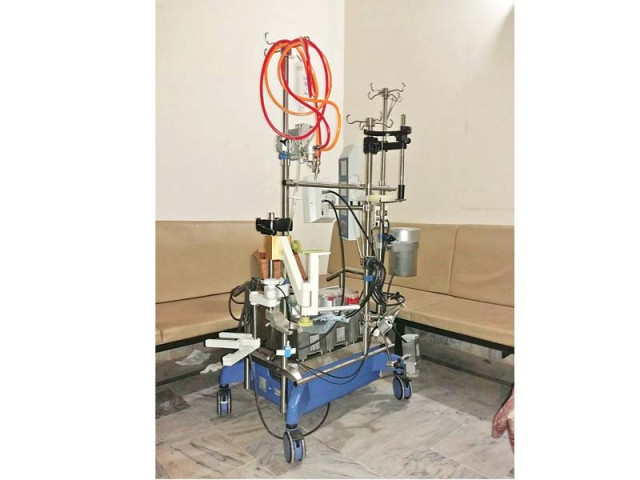
The government has provided a new angiography and gamma ray machine that awaits installation. PHOTO: EXPRESS
Providing state-of-the-art health services for cardiac patients in government hospitals in Hyderabad has so far remained an unfulfilled dream. The city, the second largest in Sindh and one where people from other districts also come for health and education facilities, is primarily dependent on private healthcare in this health specialisation.
According to health sources, in November, 2015, the head of cardiothoracic surgery department at LUH, Dr Raheel Hussain, proposed the plan for establishing the Mehran Institute of Heart and Chest Diseases. The institute was to be set up in the existing three-storey building of Department of Invasive Cardiology and Cardiac Surgery in LUH. The building is divided in two separate departments, one of which provides consultancy and treatment services on the ground and second floors and the other surgery on the first and third floors.
Subsequently, the health department moved a summary that got approved by the planning and development, finance and law departments, followed by the chief secretary and chief minister of Sindh. The model of National Institute of Cardiovascular Diseases, Karachi, was supposed to be followed.

A draft bill was also prepared to be tabled in the Sindh Assembly. However, after Murad Ali Shah replaced Qaim Ali Shah as the chief minister, the pending bills in the assembly were reportedly recalled for a review. The draft of Mehran Institute of Heart and Chest Diseases Act, 2016, was among them.
“The health minister opposed upgrading the existing cardio department in LUH to an independent institute at a cabinet meeting,” a health official, requesting anonymity, told The Express Tribune. Mandhro could not be contacted for his version.
“In [the] cabinet [meeting], the proposal was opposed by a minority of members. It was, therefore, decided that a committee of stakeholders [would] vet the proposal again and then put it for review in the cabinet ... The meeting [of stakeholders] has since not been convened and the proposal has since then [been] stranded [with] risks [having been] ignored,” Dr Hussain, who has practised in the US, UK, Saudi Arabia and Dow in Karachi before his appointment in LUH in 2012, wrote in a letter dated December 20, 2016, to the health secretary.
In that letter, Dr Hussain explained the need of setting up the institute in Hyderabad, pointing out that none existed outside Karachi. In comparison, Punjab has five cardiac institutes in Lahore, Rawalpindi, Multan, Faisalabad and Bahawalpur while a sixth is being set up in Gujranwala.
“Cardiac services in the government sector in Hyderabad are in a state of chaos despite having trained physicians,” he informed the secretary. “[The Liaquat University] hospital and [Liaquat University of Medical and Health Sciences] university administrations are unable to meet the administrative needs. Inadequate and untrained staff occupy [the] driving seats. Efforts to make new and necessary appointments for core positions are nowhere to be seen. Staff come and leave at their own will and time because they know that there is no punishment or consequences.”
He gave the example of successful results achieved by establishing Sindh Institute of Urology and Transplantation (SIUT), National Institute of Cardiovascular Diseases (NICVD), Gambat Institute of Medical Sciences (GIMS) and Sindh Institute of Ophthalmology & Visual Sciences (SIOVS), assuring that an autonomous heart institute in Hyderabad will be no less successful. “Because of the administrative independence and decision-making at local level ... it will improve delivery immediately as discipline will be restored, financial pilferage will stop and there will be focused spending with austerity. Hence, more patients will benefit from [the] same budget and staff.”
An official of LUH expressed fear that the effort will be mothballed for a long term if the bill is not approved in the next four months, after which Dr Hussain will be retiring. “It takes a doctor like Dr Hussain who is dedicated to his government job to pursue the case for the department’s upgrade and autonomy in the form of an institute,” he said. “A government doctor who is more engrossed in [his] private job - and such doctors we all know abound - can’t be expected to fight this case.”
According to health sources, Dr Hussain does not expect to be appointed as the institute’s director because the draft bill proposes that only a serving professor can be given that post.
Current state of affairs
At present, both the facilities at the department of invasive cardiology and cardiac surgery lack in some of the basic cardiac care services such as angiography. Kanwal Sindhi alias Darhu, a resident of Tharparkar, admitted his mother in the department but she was referred to a private hospital because she required angiography followed by angioplasty. “The angiography machine there was said to be defunct so I was advised to shift my mother to a private hospital as recommended by the department’s consultant,” he said. “But the delay in timely treatment cost us our mother’s life.” Darhu had to sell his wife’s jewellery, his motorcycle and a residential plot, located in a suburban remote locality in Jamshoro, to pay the slightly over Rs400,000 bill for less than two days of his mother’s hospitalisation.
Another patient’s attendant, who requested anonymity as his father was still under treatment at the department, complained of absent doctors. “The only lift in this three-storey building is dysfunctional. We had to carry our father to the CCU [cardiac care unit] on the second floor through the broken staircase on a wheelchair.”
Some 159 posts were sanctioned for Dr Hussain’s surgery section but only over a dozen staff have been posted so far. It consists of one operation theatre (OT) while another OT is likely to become operational in a month or so. The machines in the OT are around a decade old. However, latest machinery has been purchased for the new theatre.
This ward is also equipped with a mini blood laboratory. “This saves time for surgery,” said a staff member. “If we send samples for blood urea, blood CP, etcetera, tests to LUH’s main lab, they take seven to eight hours for a test that we do here in minutes.”
The government has provided a new angiography and gamma ray machine that awaits installation as well as the technical staff required to operate them. New wards are also under construction on the third floor, which will initially increase the section’s capacity by 15 more beds.
“While we are getting more space and new equipment, we always worry [if we] will get the staff as well to operate them,” wondered a technician who talked about often feeling ‘fatigued’ after working overtime for almost all the week.
Published in The Express Tribune, January 16th, 2017.


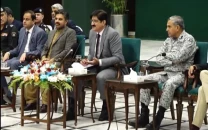
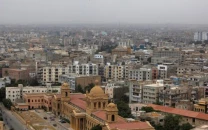
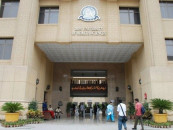
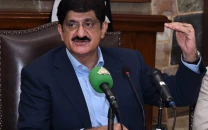












COMMENTS
Comments are moderated and generally will be posted if they are on-topic and not abusive.
For more information, please see our Comments FAQ